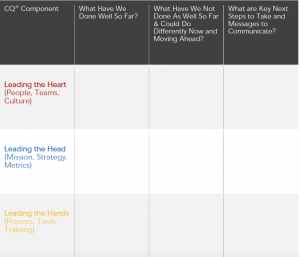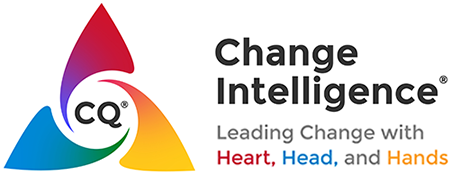 After nine long months of lockdowns and restrictions, is your team lethargic and longing for a light at the end of the tunnel? Perhaps you’ve really come together in so many ways and have pivoted successfully to adapt to our shifting reality, but still perceive an underlying current of not quite operating with optimal effectiveness? Alternatively, do you feel stuck at the bottom of the change curve, in the pit of productivity and valley of despair?
After nine long months of lockdowns and restrictions, is your team lethargic and longing for a light at the end of the tunnel? Perhaps you’ve really come together in so many ways and have pivoted successfully to adapt to our shifting reality, but still perceive an underlying current of not quite operating with optimal effectiveness? Alternatively, do you feel stuck at the bottom of the change curve, in the pit of productivity and valley of despair?
Regardless of where you team is at, I’d like to share a simple but powerful tool with you, which I’ve used with multiple clients during the pandemic to simultaneously make their team even stronger as well as strengthen their approach to navigating our current crises. I invite you to use it to collectively reflect on 2020 and reset for 2021.
The first version of this tool was suggested by the vice president of a healthcare client organization, who proposed that we conduct a Change Intelligence®-based lessons learned analysis of how the system was doing integrating multiple new community hospitals and physicians’ practices. It’s a tool you can use in this way, to facilitate an after action review of a change initiative, as well as when planning a project, and also in the way I’m suggesting now, to evaluate response to a change challenge and chart an even more winning path forward.
As I wrote early in the pandemic, change and especially crisis negatively impacts people’s feelings of autonomy, relatedness, and certainty, and this tool can play a part in restoring all three. It can help increase autonomy, by identifying positive actions under one’s immediate control. It can enhance relatedness, when done collaboratively in a team context. It can promote a sense of certainty, by resulting in a game plan that people can own and predict. If done with discipline and intentionality as a repeated process for reflection and action, using this tool can lead to greater agility, resilience, and change capability over time, by promoting a culture of experimentation and adaptability. As I also wrote about in a previous newsletter, there’s gold to be mined in the midst of radical change. This tool helps us reveal and capitalize on the opportunity hidden in this crisis.
It’s called the Change Intelligent® Analysis and Action Planning Tool, and you can download it on the Resources page of my website. Here’s how to use it. Since a response to any crisis needs to consider people, purpose, and process, this tool helps us analyze how well we are doing and how we can do better leading the Heart, leading the Head, and leading the Hands. Tackle each one at a time, row by row, like the six hats decision-making exercise, for those who are familiar with that process.
- First start with our Heart hat on, and analyze how well your team has led the Heart, which includes people, teams, and culture. Then, investigate what your team may have not done as well so far and could do differently now and moving ahead. After our evaluation of pros and cons is complete, we explore the implications of our analysis, capturing our plans in the third column, listing key next steps to take and messages to communicate.
- Next, take off your Heart hats, shift to our Head hats, and explore how you are doing leading the purpose, which includes questions around vision, mission, strategy, and achieving business objectives and key metrics. Analyze what’s working and what could be improved, and then action plan.
- Finally, take your Head hat off, and put your Hands hat on. Deliberate about how you are equipping your people with the tools and training they need. Investigate systems and processes, whether they are enabling or encumbering, and what barriers may stand in people’s way. Then, after this analysis, plan for next steps to help the Hands.
You could do a first-pass of this exercise in a 30 minute team meeting, and you could also do a deeper dive over a series of meetings or in a half-day working session.
| One client who leveraged this tool in the first month of the pandemic for meaningful impact is Rock Valley Credit Union. First the executive team conducted this exercise itself. To share one of their Heart examples, they validated that they did a great job of taking care of their people and their members, providing daily communications, financial assurances, and the like. However, they recognized that communications had come from the executives themselves, and that there was an opportunity to equip and empower middle managers to deliver messages and tangible support as well. Therefore, as a next step, each executive team member shared their team’s results with their department teams and used the tool both as a way to solicit and encourage upward feedback, as well as to identify and make progress on how each group was leading through the crisis for themselves and their members. This empowered “leaders at all levels” from the middle managers to the front line to contribute their unique perspectives and identify targeted steps to take in their own areas of accountability, because what you see depends on where you sit and people own what they help create. |
When used broadly like this, the tool enables transparent dialogue and aligned action across levels, and represents a tangible mechanism for communication down and feedback up an organization – two processes which are often arthritic if not outright broken at the best times, let alone during a crisis.
This exercise affirms how the organization and executive team has responded so rapidly and effectively to the crisis, which reminds people of their resilience and ability to agilely pivot and adapt. People often overlook their achievements, and grow from the opportunity to talk about what they did to navigate stormy seas. Moreover, it enables organizations to capture, codify, and communicate culturally-specific best practices, which can be leveraged by other parts of the organization and into the future, which promotes the development of a growth-mindset and continuous-improvement culture.
Ideally, this would not be a one-off exercise. Instead, clients who have realized the most benefits from this tool bake it into their team process, embedding it as a habit they do on a regular, periodic basis, for example once a month or more early in a change or crisis, and then quarterly when nearing steady state and the continuous improvement phase. This credit union started to build their collective Change Intelligence® two years ago, to increase capability at all levels from the CEO to the tellers proactively in advance of the roll-out of a major new vision and strategic direction. Doing so enabled them to collaborate across levels to execute the plan and its multiple initiatives with greater competence and confidence and less stress and frustration, and as you can see built an enabling foundation to meet the unanticipated challenge posed by the COVID19 crisis. As Anita Countryman, VP of Member Experience shared with me, “people look for leaders to lead in a crisis. We are shaping our relationships with our employees and with our members. Crisis reveals character. People will remember how we lead in these times.”
